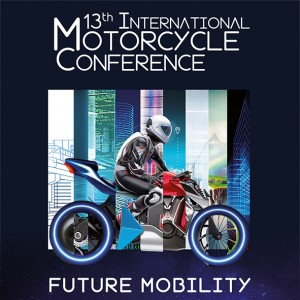Question
In our study „Dynamics of Motorcycle Crashes“ the was a varied response from riders who crashed who indicated that they were distracted, but not just from advertising or road furniture. There were cases where the riders were upset, worried, tired, thinking of something else, or simply not paying attention prior to crashing. But in these cases, they didn’t indicate that they were looking at something else, rather it appeared to be more a psychological factor rather than simply looking elsewhere.
While I understand and appreciate your conclusions regarding advertising and placement of road infrastructure, my question is 2 fold. 1) did you consider the psychological aspect when analysing the gaze of the rider? 2) What other solutions would you offer in terms of getting the rider to focus on the road ahead?
Answer by Panagiotis Lemonakis
Driver distraction presents itself in several forms i.e. visual, cognitive, biomechanical, and auditory. The paper entitled „Recording and evaluating motorcyclists‘ gaze behavior in rural roads“ examines the visual distraction solely caused by road infrastructure or any other source located in the driver’s visual field.
Cases where the riders were upset, worried, tired, thinking of something else, or simply not paying attention before crashing are very important to be examined by taking into consideration specific aspects individually. Our research team is trying to set a methodology proposing a project based on the analysis and comprehension of the driver’s reaction mechanism to visual stimuli and its impact on the driving task. The objective of this future project is two-pronged. Firstly, to identify the factors that cause distraction while driving and which affect the driver’s behavior in a detrimental way to road safety and their influence on the driving task. Secondly, the project aims to contribute to establishing best practices to alleviate the adverse effects of the above factors on road safety.
This behavioral study attempts to highlight the direct correlation of out of the vehicle factors with driving performance. For this reason, it is crucial to estimate the time threshold over which the distraction leads to a reduced decision-making capacity and hence to an impairment in driving performance. The decision-making capacity is affected by the fluctuation of the driver’s mental workload, which is correlated to physiological parameters of the human autonomic nervous system. For this reason, heart rate, respiration, skin temperature, and conductivity will be recorded. At the same time, indicators associated with driving performance (accelerations, decelerations, changes in the route etc.) will also be recorded, to extract holistic conclusions on distracted driving. The parallel collection of data will support the timely completion of the project.
Additionally, custom software will be developed, to investigate the possibility of using audible feedback to prevent distraction. Finally, the proposed project will identify potential improvements in road design and environment, in compliance with safe driving patterns.
The most original aspect of the proposed research is the simultaneous study of distracted driving and mental workload with the combined use of three technologies, tracking the driver’s distraction, measuring physiological parameters, and recording driving performance indicators. These tools have been used individually in small scale experiments. Combining the three afore-mentioned technologies will provide novel insights on the issue of driver’s distraction, possibly revealing correlations between a wide range of factors, which can be considered a scientific breakthrough. A further innovative aspect is the development and evaluation of attention resetting software.
